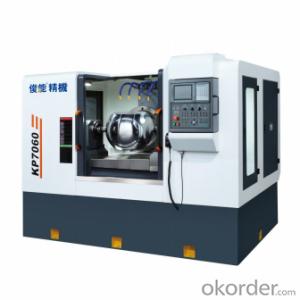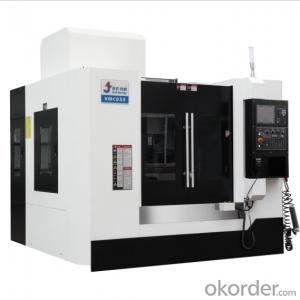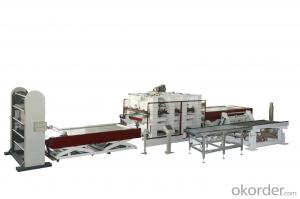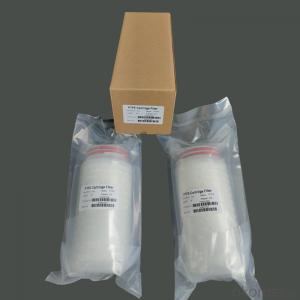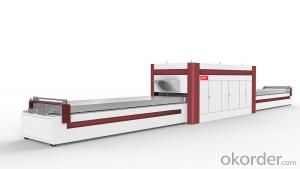Concrete Pumps Spare Parts Elbow Double Wall 90DEG R275
- Loading Port:
- Tianjin
- Payment Terms:
- TT OR LC
- Min Order Qty:
- 100 pc
- Supply Capability:
- 1000 pc/month
OKorder Service Pledge
OKorder Financial Service
You Might Also Like
Product Description:
The Concrete Pumps Spare Parts Elbow 90DEG R275 Double Wall normally made by special MN13-4, to make sure the quanlity of elbows according to customer’s requests we usually keep the content of MN strictly over 15%, it will have a longer life as well, package will be in plywood box or cartons and put into container.
Scope of Application of the Goods
The Concrete Pumps Spare Parts Elbow 90DEG R275 Double Wall is a concrete pumps parts for combined use with other concrete parts in for concrete pumps and truck pumps. It can be widely used in the construction of various types of concrete structures like industrial and civil buildings, bridges, roads, and other types of infrastructure.
This seals can only be used in Schwing type concrete pumps and truck pumps as well, but not in any other operations.
Product Advantages:
OKorder's Concrete Pumps Spare Parts Elbow 90DEG R275 Double Wall Channels are durable, strong, and safety.
Main Product Features:
· Premium quality
· Prompt delivery & seaworthy packing (5-10 days)
Reliable performance
Easy to weld
High safety.
· Professional Service
· Competitive pricing
Measuring of wall thickness from the outside
Low purchase cost
Specifications:
Elbow 90DEG R275 Double Wall Layers
Capacity Life: 80,000 cbm
FAQ:
Q1: How long about delivery time Concrete Pumps Spare Parts Elbow 90DEG R275 Double Wall ?
A1: Normally we keep the raw materials for old customers and sometime we also keep stock products to make sure delivery time in any emergency cases.
Q2: How do we guarantee the quality of our Concrete Pumps Spare Parts Elbow 90DEG R275 Double Wall?
A2: We have established an advanced quality management system which conducts strict quality tests at every step, from raw materials to the final product. At the same time, we provide extensive follow-up service assurances as required.
Q3: How soon can we receive the product after purchase?
A3: Within three days of placing an order, we will book the vessel for goods. The specific shipping date is dependent upon international and government factors, but is typically 7 to 30 workdays.
Q4: If we can produce some goods according to customers request?
A4: Yes, we can produce Elbow 90DEG R275 Double Wall according to the difference country situations to make it suitable to the market and customers. We have very professional technical team to make the design for porduction of seals.
Q5: How to make a quick resolution for after service?
A5: OKorder and our manufacture both have overseas branches all-around of world.
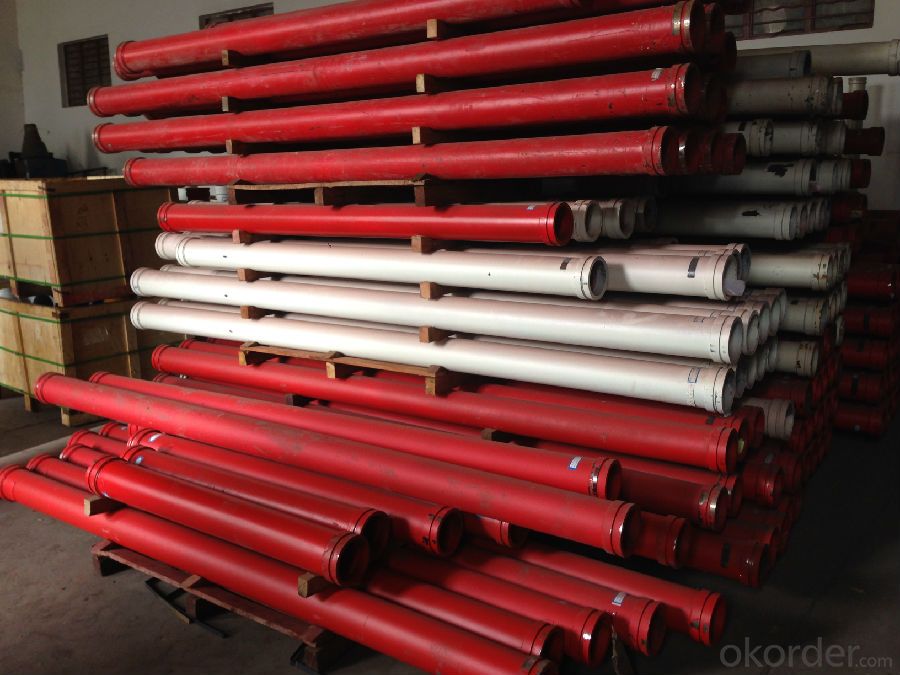
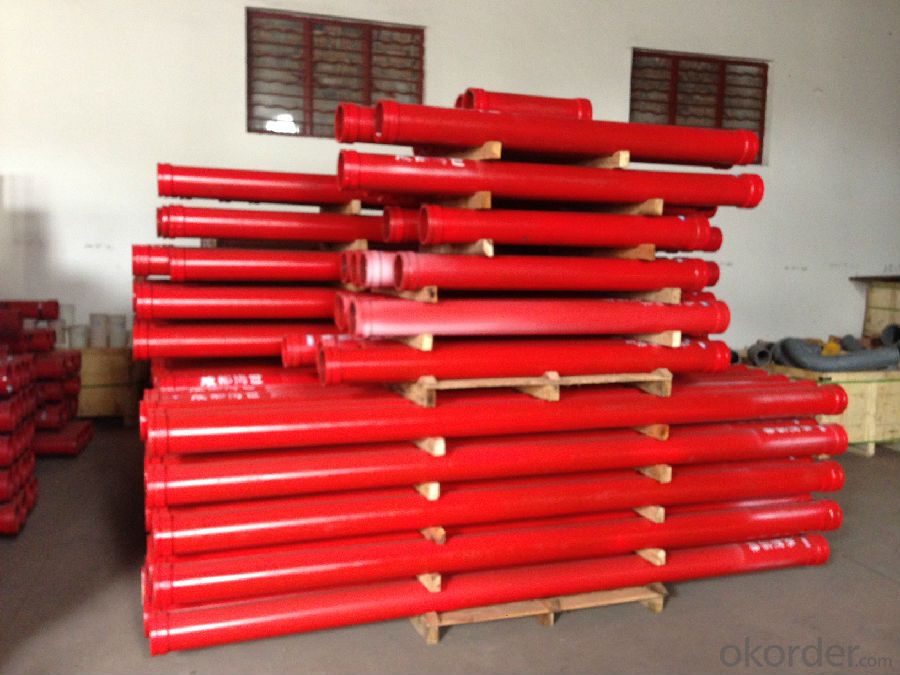
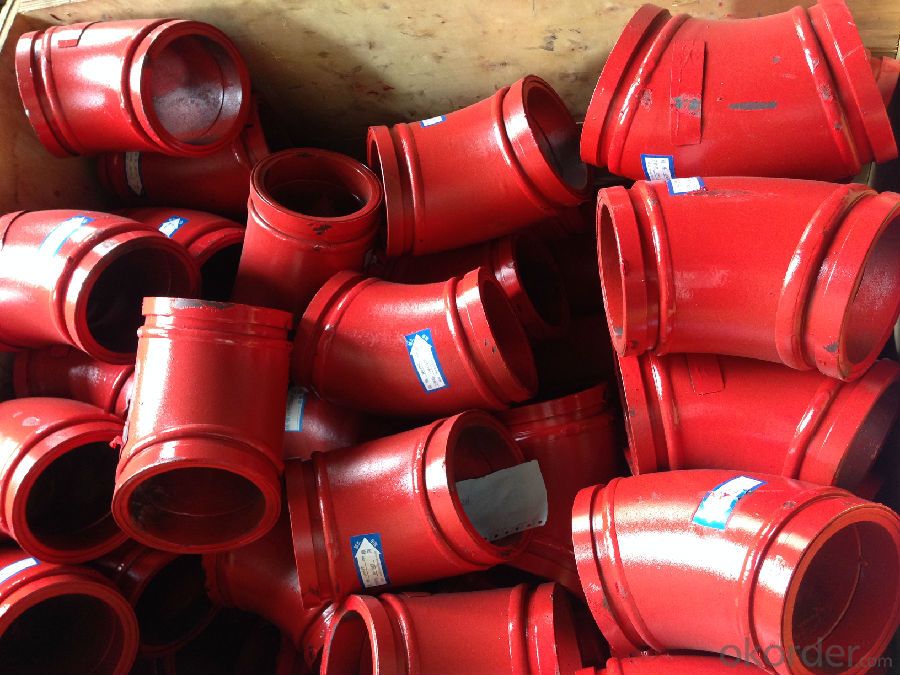
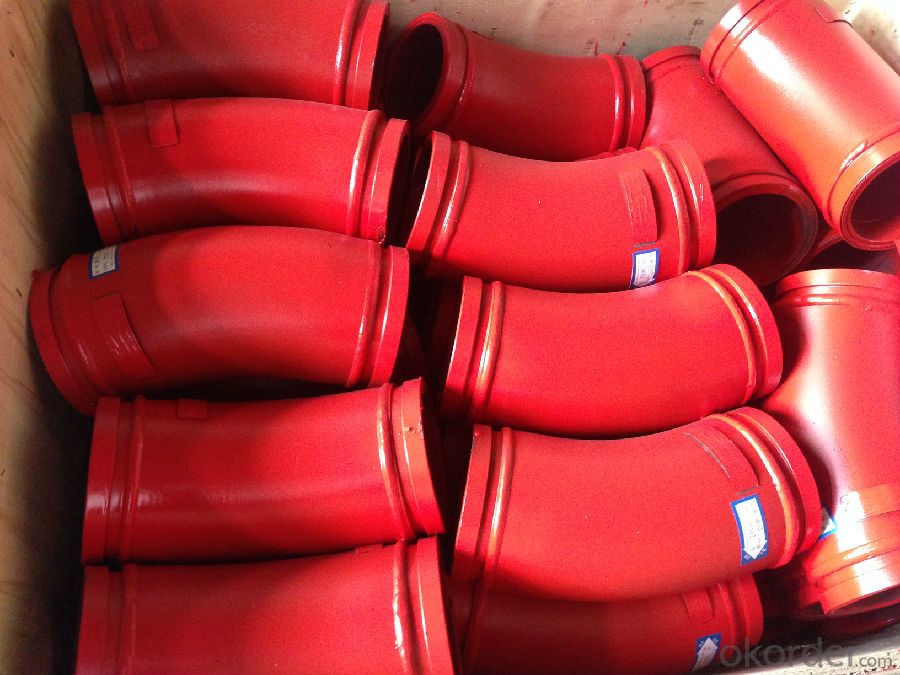
- Q:How do I properly maintain and replace hydraulic filters in concrete pump spare parts?
- To ensure your equipment's longevity and efficiency, it is crucial to properly maintain and replace hydraulic filters in concrete pump spare parts. Here are some guidelines to follow: 1. Familiarize yourself with the manufacturer's recommendations: Understand the maintenance and replacement guidelines provided by the manufacturer. These instructions may vary based on the specific pump model and filter type. 2. Regularly inspect the filters: Conduct regular inspections to identify any signs of damage, clogging, or excessive wear in the hydraulic filters. Look out for dirt, debris, or other contaminants that may hinder their performance. Address any issues promptly. 3. Establish a maintenance schedule: Implement a regular maintenance schedule for the hydraulic filters. This should include regular inspections, cleaning, and replacement intervals. Adhering to a schedule will prevent unexpected breakdowns and keep the concrete pump running smoothly. 4. Clean the filters: If the hydraulic filters can be cleaned and reused, ensure to follow the proper cleaning procedure. This typically involves removing the filter, washing it with a suitable cleaning solution, and allowing it to dry thoroughly before reinstalling. Take care not to damage the filter during the cleaning process. 5. Replace as necessary: Over time, hydraulic filters become less effective at filtering out contaminants. It is important to replace them according to the manufacturer's recommended intervals or sooner if they appear excessively dirty or damaged. Always use genuine spare parts to ensure compatibility and optimal performance. 6. Install correctly: When replacing hydraulic filters, ensure they are installed correctly and securely. Pay attention to any seals or gaskets that may need replacement as well. Improper installation can lead to leaks or reduced filtration efficiency. 7. Monitor performance: After replacing the hydraulic filters, closely monitor the pump's performance. Watch for changes in pressure, flow rate, or unusual noises. If any abnormalities are observed, it may indicate a problem with the filter or other components, requiring further investigation. By following these steps, you can effectively maintain and replace hydraulic filters in your concrete pump spare parts, ensuring optimal performance and extending the equipment's lifespan.
- Q:How often should a concrete pump cleaning ball be used?
- A concrete pump cleaning ball should be used after every use of the pump to ensure proper maintenance and prevent clogs or blockages.
- Q:What are the advantages of using polyurethane components in concrete pump spare parts?
- There are several advantages of using polyurethane components in concrete pump spare parts. Firstly, polyurethane is highly durable and resistant to wear and tear, ensuring longer lifespan and reduced maintenance costs. Secondly, polyurethane has excellent abrasion resistance, which allows it to withstand the harsh conditions and high pressures involved in concrete pumping. Additionally, polyurethane components offer superior flexibility, allowing for easier installation and reduced risk of breakage. Lastly, polyurethane is known for its chemical resistance, ensuring that the spare parts can withstand exposure to various chemicals and substances commonly found in concrete. Overall, using polyurethane components in concrete pump spare parts provides enhanced durability, flexibility, and resistance to abrasion, making it a preferred choice in the construction industry.
- Q:How can a faulty filter affect the pumping process?
- A faulty filter can impede the pumping process by allowing debris, contaminants, or particles to pass through and clog or damage the pump components. This can result in reduced efficiency, increased wear and tear, decreased flow rates, and potential pump failure.
- Q:How often should a concrete pump wear plate be replaced?
- The replacement frequency of a concrete pump wear plate relies on various factors, such as the type and volume of concrete being pumped, as well as the pump's quality and maintenance. Nonetheless, it is advisable to regularly inspect the wear plate and evaluate its condition, particularly after each concrete pour. Typically, a concrete pump wear plate ought to be replaced once it displays significant wear or damage. Indications of wear can include excessive grooves, cracks, or holes on the plate's surface. Such issues can impact the pump's efficiency and performance, leading to reduced output and potential leaks. In situations where high-intensity pumping operations or abrasive materials are used, the wear plate may experience faster wear and require more frequent replacement. Conversely, if the pump is used infrequently or with less abrasive materials, the wear plate may last longer. It is crucial to note that regular maintenance and proper cleaning of the wear plate can extend its lifespan. This involves eliminating any hardened concrete residue and ensuring a smooth and clean surface. Additionally, lubricating the plate with suitable products can help reduce friction and wear. Ultimately, it is recommended to consult the manufacturer's guidelines and seek advice from experienced professionals to determine the optimal replacement schedule for a concrete pump wear plate, taking into account the specific conditions and usage of the pump.
- Q:What is the second generation pumping technology of concrete pump?
- The whole hydraulic control technology delivery pump has no constant pressure pump, no PLC in the control box, no nitrogen gas storage tank and no close switch at the water tank. The structure is simple, and the maintenance cost is greatly reduced.
- Q:What are the performance characteristics of concrete pump?
- Adopt triple pump, open system, hydraulic circuit, without interference, system operation
- Q:Are there any specific tools required for replacing concrete pump spare parts?
- Yes, there are specific tools required for replacing concrete pump spare parts. These tools typically include a wrench set, pliers, screwdrivers, hammer, hydraulic jack, grease gun, and a welding machine. Additionally, specialized tools such as a concrete pump cleaning ball and pipe wrench may be required depending on the specific spare part being replaced.
- Q:How often should concrete pump lubrication systems be inspected and maintained?
- Concrete pump lubrication systems should be inspected and maintained regularly to ensure their proper functioning and longevity. The frequency of inspections and maintenance will depend on various factors such as the type of pump, its usage, and the manufacturer's recommendations. Generally, it is recommended to inspect and maintain concrete pump lubrication systems on a monthly basis. This allows for early detection of any potential issues or wear and tear that may require attention. Additionally, regular inspections can help identify any signs of lubricant degradation or contamination, which can impact the efficiency and performance of the system. During the inspection, it is important to check for any leaks, damaged or worn-out components, and ensure that all lubrication points are properly greased. The lubrication system should also be cleaned to remove any debris or contaminants that may have accumulated over time. In addition to monthly inspections, certain maintenance tasks should be performed at regular intervals. This may include changing the lubricant and filters, adjusting or replacing belts and hoses, and checking the system for proper pressure and flow. It is important to note that the manufacturer's guidelines and recommendations should always be followed when it comes to inspecting and maintaining concrete pump lubrication systems. They may provide specific instructions based on the type and model of the pump, as well as any unique requirements. By regularly inspecting and maintaining concrete pump lubrication systems, you can ensure their optimal performance, minimize downtime, and extend their lifespan.
- Q:How does a hydraulic accumulator improve the performance of a concrete pump?
- A hydraulic accumulator improves the performance of a concrete pump by ensuring a constant and reliable flow of concrete. The primary function of a hydraulic accumulator is to store hydraulic energy in the form of fluid under pressure. In the case of a concrete pump, this accumulator stores energy from the hydraulic system and releases it when needed to assist in the pumping process. Concrete pumps require a consistent flow of concrete to maintain efficiency and productivity. However, the process of pumping concrete can be challenging, especially when dealing with variations in demand or pressure fluctuations. This is where a hydraulic accumulator comes into play. By storing excess hydraulic energy, the accumulator acts as a buffer, smoothing out any inconsistencies in the hydraulic system. When the pump requires an extra surge of power, the accumulator releases the stored energy, providing an additional boost to the hydraulic system. This ensures a continuous and steady flow of concrete, even during peak demand or pressure changes. Moreover, hydraulic accumulators also help in reducing the wear and tear on the pump components. By absorbing and dampening pressure shocks, they prevent sudden pressure spikes and fluctuations from reaching the pump. This helps to prolong the lifespan of the pump and minimize the risk of breakdowns or damage. Overall, a hydraulic accumulator plays a crucial role in improving the performance of a concrete pump by providing a steady flow of concrete, reducing pressure fluctuations, and protecting the pump from excessive wear and tear. It enhances the efficiency, reliability, and durability of the pump, ultimately leading to increased productivity and cost savings in concrete pumping operations.
1. Manufacturer Overview |
|
|---|---|
| Location | |
| Year Established | |
| Annual Output Value | |
| Main Markets | |
| Company Certifications | |
2. Manufacturer Certificates |
|
|---|---|
| a) Certification Name | |
| Range | |
| Reference | |
| Validity Period | |
3. Manufacturer Capability |
|
|---|---|
| a)Trade Capacity | |
| Nearest Port | |
| Export Percentage | |
| No.of Employees in Trade Department | |
| Language Spoken: | |
| b)Factory Information | |
| Factory Size: | |
| No. of Production Lines | |
| Contract Manufacturing | |
| Product Price Range | |
Send your message to us
Concrete Pumps Spare Parts Elbow Double Wall 90DEG R275
- Loading Port:
- Tianjin
- Payment Terms:
- TT OR LC
- Min Order Qty:
- 100 pc
- Supply Capability:
- 1000 pc/month
OKorder Service Pledge
OKorder Financial Service
Similar products
New products
Hot products
Related keywords


















